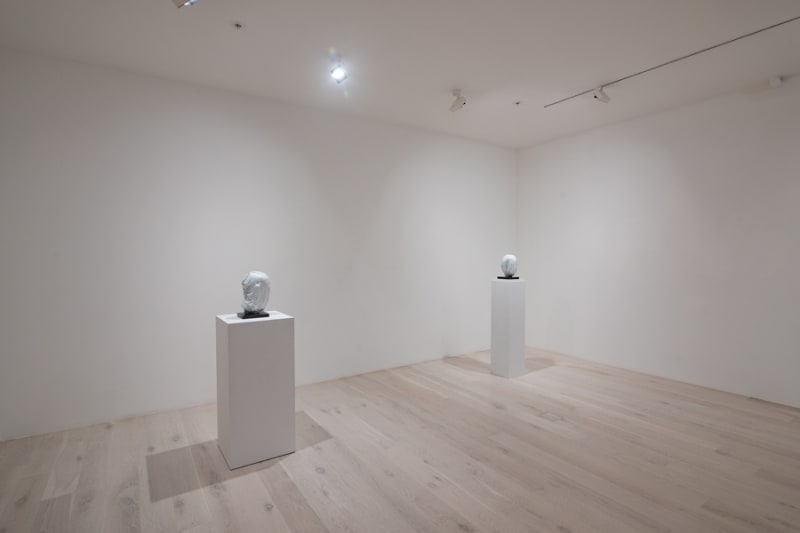Sam Harrison
The practice of Christchurch-based artist Sam Harrison explores the universal via the human figure across a range of media - sculpture, woodblock printing, and watercolour. While each material process provides a different insight into the tradition of nude representation, each also feeds into the same conversation: after millennia of depicting the same subject, what does the nude mean for art and the human experience now?
The answer comes partially concealed, both literally and figuratively. Harrison's sculptures wear mantles, shrouded in swathes of fabric fixed in bronze and plaster. Thus preserved, the fabric at once reveals the recognizable male or female forms beneath, but obfuscates the audience from gleaning specific information about the models. In obscuring his forms as such, Harrison quietly confronts the constructs that create boundaries between people - whether temporal or geographical, political or cultural.
Harrison's expertly realised sculptures are staged in the gallery alongside the artist's woodblock prints and watercolours to contextualise the nude, while also demonstrating the intensive process of creating the works in bronze and plaster. Hidden permanently under the loose folds of fabric are complete representational portraits of the artist's models. Harrison explains: 'The sculptures start as fast sketches from life - models might sit for one or two hours at a time.' From this point, Harrison makes a representational portrait of his model in plaster. Once satisfied with the portrait, Harrison commits an almost destructive act: he covers the portrait in a sheet, and then, armed with handfuls of plaster, he works bit by bit to seal the loose folds of fabric. In the busts, the artist has deliberately left evidence of the material process, whereby seams and loose threads are only partially covered. By working to both conceal and reveal simultaneously, Harrison confronts the viewer's reception of the nude form. Australian artist Jude Rae, renowned for her exquisitely executed still life paintings, has mused on the nude and drapery in Harrison's sculptures:
"The Nude has been a troubled motif in the Western art for well over a century. The old hierarchies that placed the "life study" at the apex of the classical "beaux arts" teaching pyramid are long gone, and the seedier and more cliched iterations of the nude in historical painting and sculpture seem largely to have defeated its expressive potential.
It might be assumed that these veiled figures by Sam Harrison also seek to avoid our cultural difficulties with the Nude. Drapery is not a new device in art and there is a certain currency to its application to the human body. My experience of Harrison's work, however, is that he is not prone to the rhetorical flourish. Instead, he approaches the subject of the unclothed figure directly and with expressive discretion and sensitivity.
Anyone familiar with Sam Harrison's unclothed figures will recognise in them an abbreviation and succinctness of expression. His discretion demonstrates his understanding that representation can be too literal, and exposure too complete, in these days of limitless information. With equal care he has avoided the dangers of partial concealment which, in the language of the body, so easily falls into titillation.
The drapery covering these figures is not concerned with concealment so much as the revelation of certain structural essentials. In these works the artist is engaged in a process of reducing and refining perception. He is relying on those visceral connections of felt understanding, brought to the work by the viewer, to sustain recognition beyond the literal description offered by a more transparent representation."- Jude Rae, 2020









